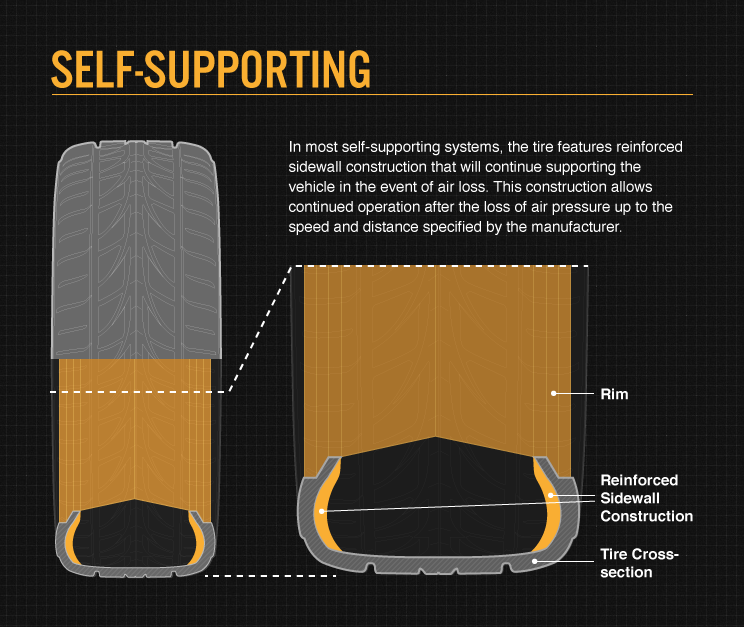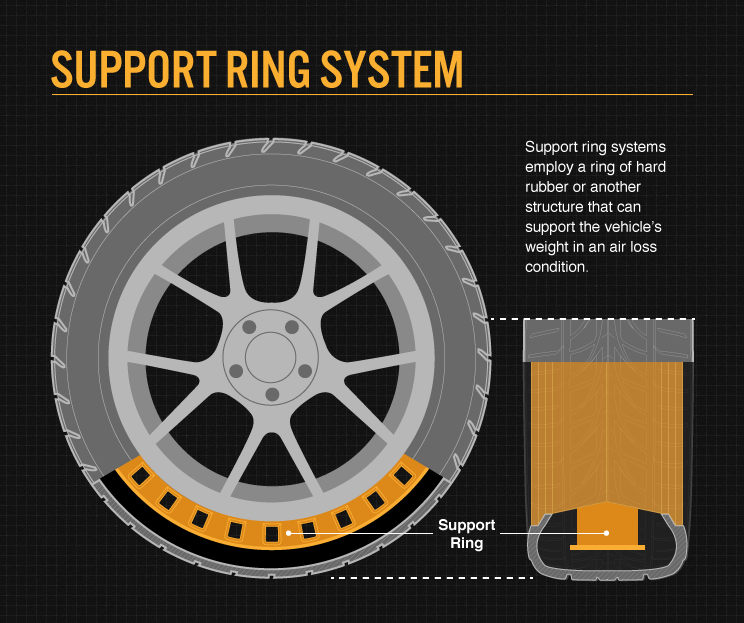Though they first appeared in the mid-1980s, Run-Flat Technology (RFT) tyres are now more popular than ever. With some auto manufacturers making them standard in new vehicles, more consumers are asking about Run-Flats as well as their advantages and how using them impacts driving.
What Are Run Flat Tyres?
With Run-Flat Technology (RFT) tyres, you can continue driving after a puncture so you make your way to a workshop or find a safe, level area to change your tyre.
You can’t drive on them indefinitely, though. Check the manufacturer’s specifications to find out how fast and how far you can drive on your RFT tyres. Bridgestone’s RFT tyres will allow continued operation even after a loss of some or all inflation pressure for up to 80 km at a maximum speed up to 80 km/h.
How Do Run Flat Tyres Work?
There are two primary types of Run-Flat Technology (RFT) tyre systems: the self-supporting system and the support ring system.
In most self-supporting RFT tyre systems, the tyre features reinforced sidewall construction that will continue supporting the vehicle in the event of air loss. This construction allows continued operation after the loss of air pressure up to the speed and distance specified by the manufacturer.

Support ring Run-Flat Technology (RFT) tyre systems, on the other hand, employ a ring of hard rubber or another structure that can support the vehicle’s weight in an air loss condition.

Since they continue performing even though they’re “flat,” all run flat tires, regardless of the specific system type, may only be used on a vehicle equipped with a Tire Pressure Monitoring System (TPMS). The TPMS alerts you as soon as one of your tires loses pressure. Without it, you might not know you were driving on an underinflated tire.
Benefits of Run Flat Tyres
You don’t have to change your tyre in dangerous or uncomfortable conditions. This is perhaps the biggest benefit of run flat tyres and is the one of the reasons why they were designed. With conventional tyres, you have to replace a flat on the spot or have your car towed.
In a puncture situation, run flats are more stable than conventional tyres. Since they’re made to support your vehicle even when they contain no air, run flat tyres will help you maintain better control in a complete air loss situation than conventional tyres.
As consumers continue to prioritise safety on the list of features they look for in a vehicle, the popularity of RFT tyres is expected to grow. Since RFT tyres work reliably with interconnected technologies like Tyre Pressure Monitoring System (TPMS), it may only be a matter of time before they become the norm rather than the exception in new vehicles.